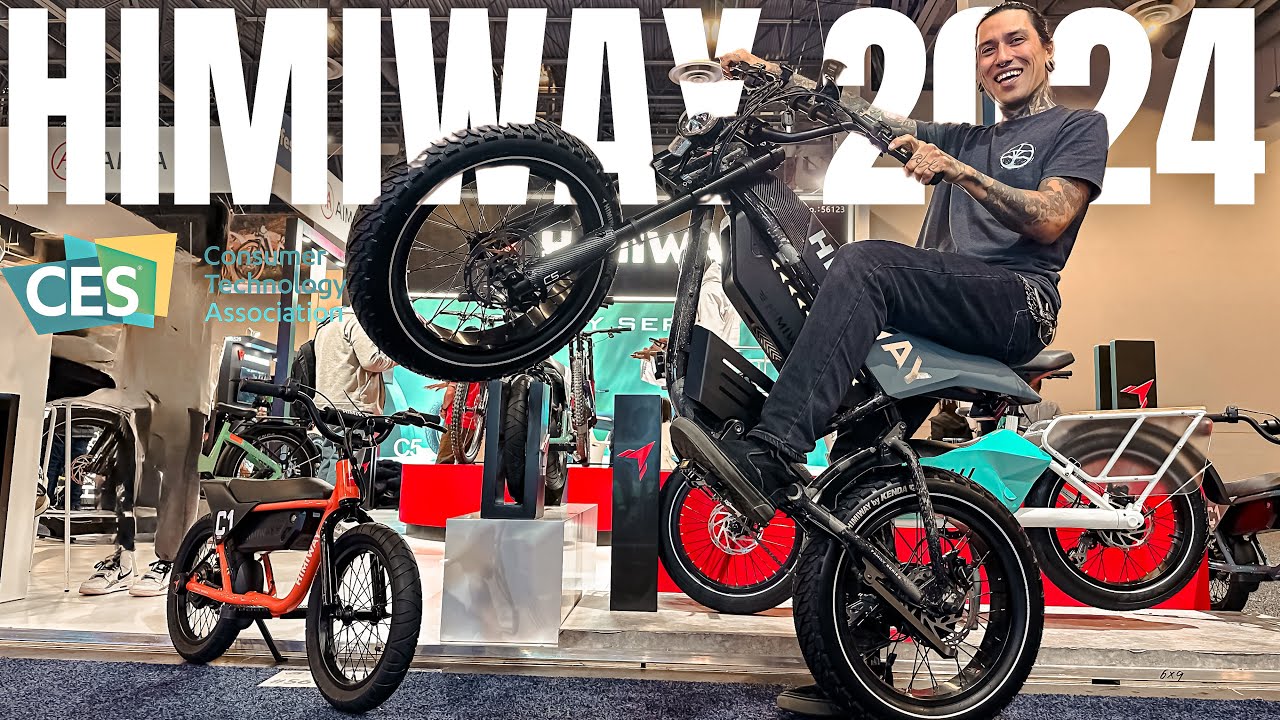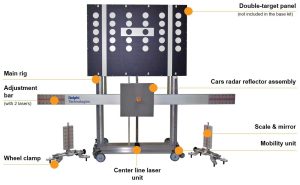
The Future of Electric Bikes: Emerging Tech and Trends
Stability Control and Anti-Lock Brakes
Yes, really. Bosch has already demoed an e-bike anti-lock brake system (ABS) that prevents the wheels from locking up on slippery surfaces. The next step? Traction control and stability management that modulates power if it detects the rear wheel slipping. This isn’t just about performance—it’s about preventing accidents before they happen.
The Shape of Things to Come: Design Trends
So what will the future of electric bikes actually look like? The trends are pointing in two fascinating directions.
Hyper-Integration
The “invisible” e-bike. Batteries are fully integrated into the down tube. Wires are routed internally. Motors are sleek and low-profile. The result is a bike that looks almost analog, celebrating clean lines and minimalist design. It’s stealthy and sophisticated.
Rugged Utility and Modularity
On the opposite end of the spectrum, you have the do-anything cargo hauler. These bikes are embracing their electric nature with bold, utilitarian designs. Think modular accessory systems: snap on a child seat, a front rack, or a set of panniers in seconds. They’re built not just for riding, but for living—replacing car trips to the grocery store, the hardware store, you name it.
The Big Picture: E-Bikes in the Urban Landscape
This isn’t just about the bikes themselves. It’s about how they fit into our cities. Micromobility is exploding, and e-bikes are at the center of it. We’re seeing more bike-friendly infrastructure, from protected lanes to dedicated parking and charging hubs.
Some forward-thinking cities are even experimenting with traffic light integration, where e-bikes can communicate with signals to request a green light or extend a green phase. The bike is becoming a connected node in a smarter, smoother urban transportation network.
The future of electric bikes is bright, and honestly, it’s arriving faster than we expected. It’s a future of greater freedom, smarter technology, and a more seamless connection between us, our machines, and our world. The simple joy of riding a bike is about to get a whole lot more interesting.
Electric bikes aren’t just a passing fad. Honestly, they’re reshaping how we think about getting from A to B. And the tech? It’s evolving at a breakneck pace. It feels like every few months there’s something new—a smarter motor, a longer-lasting battery, a feature that just makes you say, “Well, why didn’t they think of that before?”
Let’s dive into what’s coming next. We’re talking about the future of electric bikes, from the subtle tweaks to the game-changing innovations that’ll make your next ride feel like a leap into tomorrow.
Smarter Than Your Average Bike: The AI and Connectivity Revolution
Here’s the deal: the e-bike of the future is less like a simple bicycle and more like a smart device on two wheels. It’s all about connectivity and intelligence.
Integrated Digital Ecosystems
Imagine your bike seamlessly syncing with your phone, your watch, your smart home. It’s already starting. We’re seeing more and more models with built-in GPS, Bluetooth, and 4G/5G connectivity. This isn’t just for tracking your route on Strava. Think anti-theft systems that alert you the moment your bike is moved without your permission. Or maintenance alerts that tell you your brake pads are wearing thin before you hear that awful grinding sound.
Adaptive Assist and Predictive Terrain Mapping
This one is wild. The next wave of e-bike motors will use artificial intelligence to learn your riding style. Do you hammer on the pedals from a stop? Or do you prefer a gentle, gradual push? The motor will adapt to you, providing a perfectly natural-feeling boost.
Even cooler? Predictive terrain mapping. Using GPS data, the bike could know a massive hill is coming up in half a mile. It might automatically conserve battery or preemptively adjust the power assist level to give you the smoothest, most efficient climb possible. It’s like having a co-pilot who knows the road better than you do.
The Heart of the Matter: Battery and Motor Innovations
Sure, range anxiety is a thing for e-bike riders, too. But emerging battery technology is poised to make it a thing of the past.
Solid-State Batteries
The holy grail. Solid-state batteries promise to be lighter, safer, and offer a significantly higher energy density than the current lithium-ion standard. What does that mean for you? Lighter bikes and potentially double the range on a single charge. They’re still a few years out from mass-market adoption, but they’re coming. The wait will be worth it.
Lighter, More Efficient Motors
Mid-drive motors are getting smaller, lighter, and quieter. The focus is on efficiency—squeezing every last watt of power out of each electron to extend your ride. We’re also seeing more lightweight e-bike designs that prioritize a natural ride feel. The goal is to make the electric assist so seamless that you sometimes forget it’s even there… until you need it.
New Materials, New Possibilities
It’s not just what’s in the bike, but what it’s made of. Advanced materials are leading to stronger, lighter, and frankly, cooler-looking frames.
Carbon fiber is trickling down from high-performance road bikes to more affordable e-bikes, shedding precious pounds. But keep an eye on things like recycled aluminum alloys and even 3D-printed titanium lugs. Sustainability is becoming a major driver. Brands know that riders who care about the planet are also likely to choose a bike that reflects those values.
Safety Gets a High-Tech Upgrade
As roads get more crowded, safety is paramount. And tech is stepping up in a huge way.
Advanced Lighting and Radar
Integrated, automatic brake lights and turn signals are becoming more common. But the real game-changer is rear-facing radar. Systems like those from Garmin and others already alert riders to vehicles approaching from behind, long before you can hear or see them. The future will integrate this directly into the bike’s display, creating a 360-degree awareness bubble.
Stability Control and Anti-Lock Brakes
Yes, really. Bosch has already demoed an e-bike anti-lock brake system (ABS) that prevents the wheels from locking up on slippery surfaces. The next step? Traction control and stability management that modulates power if it detects the rear wheel slipping. This isn’t just about performance—it’s about preventing accidents before they happen.
The Shape of Things to Come: Design Trends
So what will the future of electric bikes actually look like? The trends are pointing in two fascinating directions.
Hyper-Integration
The “invisible” e-bike. Batteries are fully integrated into the down tube. Wires are routed internally. Motors are sleek and low-profile. The result is a bike that looks almost analog, celebrating clean lines and minimalist design. It’s stealthy and sophisticated.
Rugged Utility and Modularity
On the opposite end of the spectrum, you have the do-anything cargo hauler. These bikes are embracing their electric nature with bold, utilitarian designs. Think modular accessory systems: snap on a child seat, a front rack, or a set of panniers in seconds. They’re built not just for riding, but for living—replacing car trips to the grocery store, the hardware store, you name it.
The Big Picture: E-Bikes in the Urban Landscape
This isn’t just about the bikes themselves. It’s about how they fit into our cities. Micromobility is exploding, and e-bikes are at the center of it. We’re seeing more bike-friendly infrastructure, from protected lanes to dedicated parking and charging hubs.
Some forward-thinking cities are even experimenting with traffic light integration, where e-bikes can communicate with signals to request a green light or extend a green phase. The bike is becoming a connected node in a smarter, smoother urban transportation network.
The future of electric bikes is bright, and honestly, it’s arriving faster than we expected. It’s a future of greater freedom, smarter technology, and a more seamless connection between us, our machines, and our world. The simple joy of riding a bike is about to get a whole lot more interesting.



Average Rating